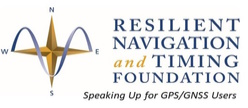Editor’s Note: This article responds to the question from mariners and others in the industry – ‘What’s going on? We hear about new Chinese satellites, European satellites, and other projects all the time, but none of it seems to be making a splash.’

Image: Philippine Sea – NASA

Global eNav – Great Benefits Awaiting a Resilient System
By Captain Dana A. Goward, USCG (ret.) and Dr Paul Williams 2017-09-06 02:56:43
The next great leaps for international maritime productivity are poised to be the introduction of autonomous/remotely operated vessels, and the multitude of maritime and supply chain efficiencies brought about by the promised but long-delayed implementation of IMO’s eNavigation concept.
Unfortunately, both opportunities rely upon a resilient electronic positioning and navigation architecture that IMO first called for in 2008, but which still does not exist.
The world has abundant electronic navigation, of course, from satellites like the Global Positioning System (GPS), and it is now the primary means by which mariners navigate. However, satellites alone are unable to provide IMO’s “…robust, reliable and dependable” signals for safety of navigation and safety of life applications.
Global Navigation Satellite Systems (GNSS) do continue to improve and grow in number, as discussed below. These upgrades will provide marginal increases in robustness and reliability for those equipped to access the systems. Nevertheless, all GNSS transmit very faint signals in the same general frequency band. These can easily be disrupted by natural phenomena, malicious actors and even system failures. There is ample evidence that local disruptions are happening all the time.
Successful implementation of autonomous/remotely operated vessels and/or eNavigation will require that this fundamental shortfall be addressed. GNSS must be paired with another source or sources such that the combined systems are virtually impossible to disrupt.
The following is a summary of proposed and on-going projects that will help improve electronic navigation, and in some cases could make it bulletproof:

